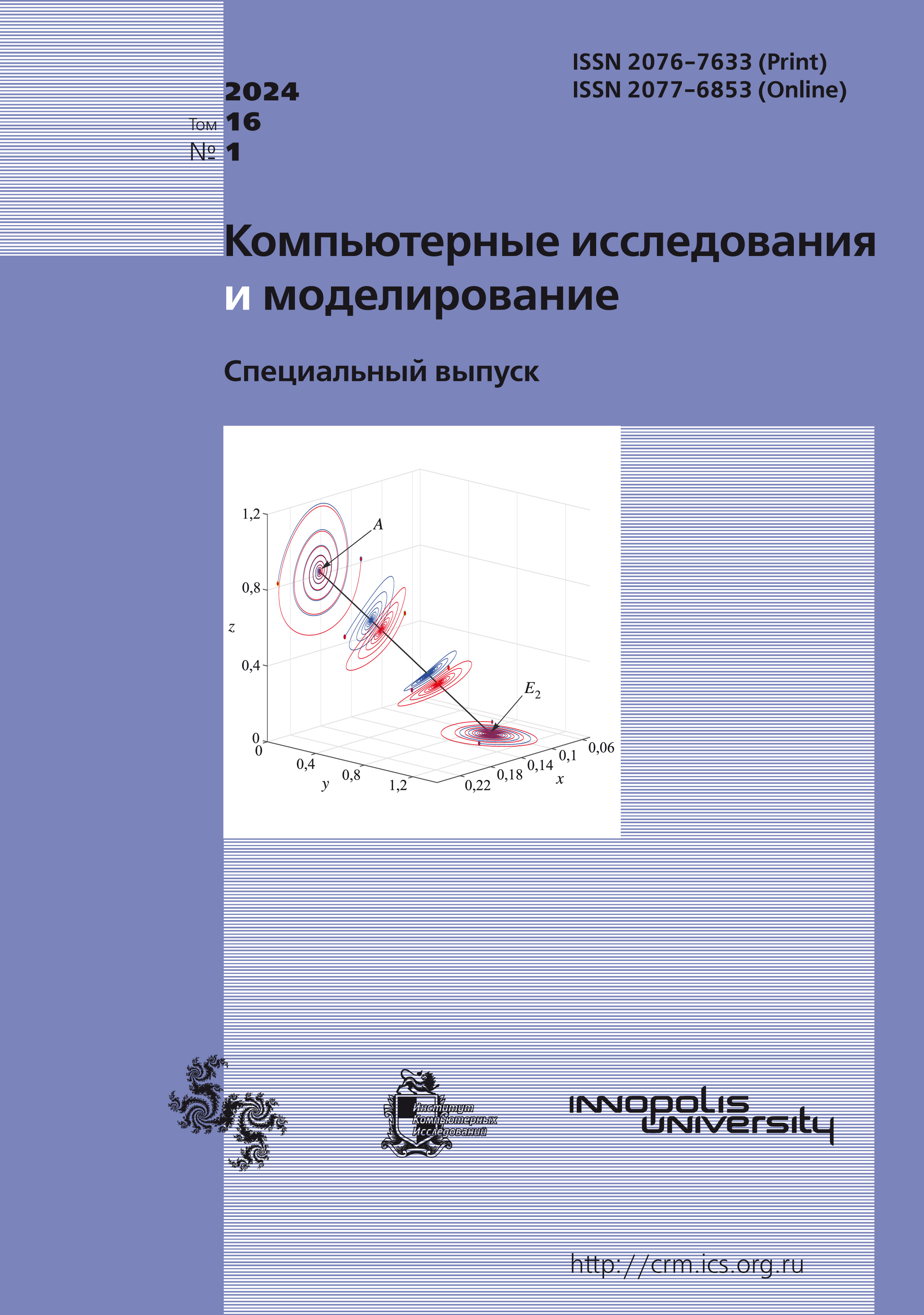All issues
- 2025 Vol. 17
- 2024 Vol. 16
- 2023 Vol. 15
- 2022 Vol. 14
- 2021 Vol. 13
- 2020 Vol. 12
- 2019 Vol. 11
- 2018 Vol. 10
- 2017 Vol. 9
- 2016 Vol. 8
- 2015 Vol. 7
- 2014 Vol. 6
- 2013 Vol. 5
- 2012 Vol. 4
- 2011 Vol. 3
- 2010 Vol. 2
- 2009 Vol. 1
Cloud interpretation of the entropy model for calculating the trip matrix
 pdf (539K)
pdf (539K)
As the population of cities grows, the need to plan for the development of transport infrastructure becomes more acute. For this purpose, transport modeling packages are created. These packages usually contain a set of convex optimization problems, the iterative solution of which leads to the desired equilibrium distribution of flows along the paths. One of the directions for the development of transport modeling is the construction of more accurate generalized models that take into account different types of passengers, their travel purposes, as well as the specifics of personal and public modes of transport that agents can use. Another important direction of transport models development is to improve the efficiency of the calculations performed. Since, due to the large dimension of modern transport networks, the search for a numerical solution to the problem of equilibrium distribution of flows along the paths is quite expensive. The iterative nature of the entire solution process only makes this worse. One of the approaches leading to a reduction in the number of calculations performed is the construction of consistent models that allow to combine the blocks of a 4-stage model into a single optimization problem. This makes it possible to eliminate the iterative running of blocks, moving from solving a separate optimization problem at each stage to some general problem. Early work has proven that such approaches provide equivalent solutions. However, it is worth considering the validity and interpretability of these methods. The purpose of this article is to substantiate a single problem, that combines both the calculation of the trip matrix and the modal choice, for the generalized case when there are different layers of demand, types of agents and classes of vehicles in the transport network. The article provides possible interpretations for the gauge parameters used in the problem, as well as for the dual factors associated with the balance constraints. The authors of the article also show the possibility of combining the considered problem with a block for determining network load into a single optimization problem.
Copyright © 2024 Podlipnova I.V., Dorn Y.V., Sklonin I.A.
Indexed in Scopus
Full-text version of the journal is also available on the web site of the scientific electronic library eLIBRARY.RU
The journal is included in the Russian Science Citation Index
The journal is included in the RSCI
International Interdisciplinary Conference "Mathematics. Computing. Education"






